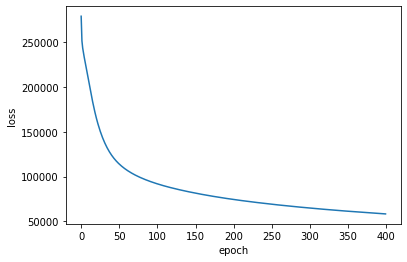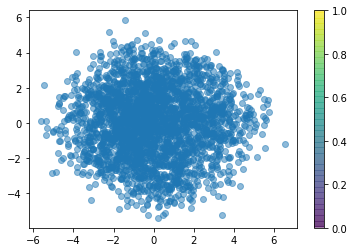Word2Vecといっても、その実装には色んなバリエーションがあるそうですが、その中の CBOW (Continuous bag-of-words) ってのを PyTorch で実装してみました。あくまで勉強用であって、実用向きではありません。
学習済みモデルを Google Colaboratory に保存するための準備
次のようにして Google Colaboratory にマウントします。
from google.colab import drive
drive.mount('/content/drive')
Mounted at /content/drive
学習済みモデルを保存するためのディレクトリを指定します。なければ作ります。
import os
directory_path = './drive/MyDrive/word2vec3/'
if not os.path.exists(directory_path):
os.makedirs(directory_path)
練習用データ
UCI の Machine-Learning Repository の SMS Spam Collection データセットを使います。与えられた文章から、それがスパムかどうかを判定する問題に用いますが、今回はスパムかどうかは判定せず、文章だけを使います。
import os
import requests
from zipfile import ZipFile
import io
import csv
save_file_name = os.path.join("temp", "temp_spam_data.csv")
# もしも元データがなければダウンロードする
if not os.path.exists("temp"):
os.makedirs("temp")
if not os.path.isfile(save_file_name):
zip_url = "http://archive.ics.uci.edu/ml/machine-learning-databases/00228/smsspamcollection.zip"
r = requests.get(zip_url)
z = ZipFile(io.BytesIO(r.content))
file = z.read("SMSSpamCollection")
text_data = file.decode()
text_data = text_data.encode('ascii', errors='ignore')
text_data = text_data.decode().split("\n")
text_data = [x.split("\t") for x in text_data if len(x) > 1]
with open(save_file_name, "w") as temp_output_file:
writer = csv.writer(temp_output_file)
writer.writerows(text_data)
# もし元データがあればそれを読み込む
else:
text_data = []
with open(save_file_name, "r") as temp_output_file:
reader = csv.reader(temp_output_file)
for row in reader:
text_data.append(row)
texts = [x[1] for x in text_data]
target = [x[0] for x in text_data]
データの前処理
語彙の最終的なサイズを減らすために、テキストを正規化します。具体的には、テキストの大文字小文字の区別をなくしたり、数字を除いたり、余分なスペースを除いたり、句読点を除いたりします。
# 小文字に変換
texts = [x.lower() for x in texts]
# 数字を削除
texts = ["".join(c for c in x if c not in '0123456789') for x in texts]
# 余分なホワイトスペースを除去
texts = [" ".join(x.split()) for x in texts]
import string
# 句読点を削除
texts = ["".join(c for c in x if c not in string.punctuation) for x in texts]
ここでは、1つの文あたりの単語数を 25 とし、3 回以上出現しない単語も取り除きます。
class VocabularyProcessor:
def __init__(self, sentence_size, min_frequency=3):
self.sentence_size = sentence_size
self.min_frequency = min_frequency
self.freq = {}
self.vocabulary_ = []
self.vocab = {}
def fit_transform(self, texts):
freq = {}
for sentence in texts:
for word in sentence.split():
if word not in freq.keys():
freq[word] = 0
freq[word] += 1
for k, v in freq.items():
if v >= self.min_frequency:
self.freq[k] = v
self.vocabulary_ = self.freq.keys()
transformed_texts = []
for sentence in texts:
transformed_sentence = []
for word in sentence.split():
if word in self.freq.keys():
if word not in self.vocab:
self.vocab[word] = len(self.vocab)
transformed_sentence.append(word)
if len(transformed_sentence) >= self.sentence_size:
break
transformed_sentence = " ".join(transformed_sentence)
transformed_texts.append(transformed_sentence)
return transformed_texts
sentence_size = 25
min_word_freq = 3
vocab_processor = VocabularyProcessor(sentence_size, min_frequency=min_word_freq)
texts = vocab_processor.fit_transform(texts)
N-gram の作成
文章中に隣接して現れる単語の列を作ります。ついでに vocab として、単語集を作ります。
n_grams = []
vocab = []
for text in texts:
words = text.split()
vocab += words
n_grams += [([words[i], words[i+1], words[i+2], words[i+4], words[i+5], words[i+6]], words[i+3])
for i in range(len(words) - 6)]
vocab = list(set(vocab))
vocab は保存しておいた方がいいですね。
import pickle
with open(directory_path + "vocab.pkl", 'wb') as f:
pickle.dump(vocab, f)
CBOW (Continuous bag-of-words) モデル
次のように CBOW (Continuous bag-of-words) モデルを設計します。
import torch
class CBOW(torch.nn.Module):
def __init__(self, vocab_size, embedding_dim, context_size):
super(CBOW, self).__init__()
self.embeddings = torch.nn.Embedding(vocab_size, embedding_dim)
self.linear1 = torch.nn.Linear(context_size * embedding_dim, 128)
self.linear2 = torch.nn.Linear(128, vocab_size)
def forward(self, inputs):
embeds = self.embeddings(inputs).view((1, -1))
out = torch.nn.functional.relu(self.linear1(embeds))
out = self.linear2(out)
return out
学習
調整可能なパラメータとして、CONTEXT_SIZE を、文脈を考慮する前後の単語の合計数、EMBEDDING_DIM を、単語分散表現の次元数とします。
CONTEXT_SIZE = 6
EMBEDDING_DIM = 10
word_to_ix = {word: i for i, word in enumerate(vocab)}
losses = []
loss_function = torch.nn.CrossEntropyLoss()
model = CBOW(len(vocab), EMBEDDING_DIM, CONTEXT_SIZE)
optimizer = torch.optim.SGD(model.parameters(), lr=0.001)
学習開始。学習途中のモデルも保存するようにしています。
for epoch in range(400):
!date
total_loss = torch.Tensor([0])
for context, target in n_grams:
context_idxs = [word_to_ix[w] for w in context]
context_var = torch.autograd.Variable(torch.LongTensor(context_idxs))
model.zero_grad()
output = model(context_var)
loss = loss_function(output, torch.autograd.Variable(torch.LongTensor([word_to_ix[target]])))
loss.backward()
optimizer.step()
total_loss += loss.data
losses.append(total_loss.detach().numpy()[0])
print(epoch, total_loss)
PATH = directory_path + "model_{}.pth".format(epoch)
torch.save(model.state_dict(), PATH)
学習曲線は次のようになりました。
import matplotlib.pyplot as plt
plt.plot(losses)
plt.xlabel("epoch")
plt.ylabel("loss")
plt.show()
まだ学習し足りない気がしますが、このへんで終わりとします。いちおうロスの履歴も保存しときます。
import pickle
with open(directory_path + "losses.pkl", 'wb') as f:
pickle.dump(losses, f)
CBOWモデルの構成
今回使ったCBOWモデルは次のような構成でした。
model
CBOW(
(embeddings): Embedding(2694, 10)
(linear1): Linear(in_features=60, out_features=128, bias=True)
(linear2): Linear(in_features=128, out_features=2694, bias=True)
)
その中の embeddings が、単語数 x 埋め込み次元数 の形の行列、つまり単語分散表現。
model.embeddings.weight
Parameter containing:
tensor([[ 0.1757, 2.1936, 1.1479, ..., -0.4144, -0.7548, 0.3695],
[ 0.1962, 0.0238, 1.1729, ..., -2.3863, 0.4950, -0.1202],
[ 0.9316, 0.7451, 0.5241, ..., 0.0532, 0.1612, -0.2888],
...,
[-0.6087, 1.9787, 0.4039, ..., 0.3821, 0.6576, 1.8304],
[-1.2499, -0.4358, -1.4592, ..., 0.6641, -0.8658, -1.0650],
[ 0.4118, -0.2603, -1.9144, ..., -1.2599, 0.1849, 0.6056]],
requires_grad=True)
word2vec というと普通は機械学習モデルを指すと思いますが、ここでは word2vec =「単語をベクトルに変換するもの」=「単語分散表現の行列」という変数名にしました(乱暴)
word2vec = model.embeddings.weight.detach().numpy()
word2vec
array([[ 0.17574234, 2.193559 , 1.1479073 , ..., -0.41436067,
-0.7548341 , 0.36947948],
[ 0.19621728, 0.02384255, 1.1728823 , ..., -2.38634 ,
0.49504647, -0.12015778],
[ 0.9316455 , 0.74507606, 0.5240704 , ..., 0.05318468,
0.16119353, -0.2887744 ],
...,
[-0.60866654, 1.9787219 , 0.4038656 , ..., 0.38205254,
0.65760624, 1.8303967 ],
[-1.249858 , -0.4358453 , -1.4592329 , ..., 0.6640799 ,
-0.8657619 , -1.0649782 ],
[ 0.41184828, -0.26025063, -1.914422 , ..., -1.259887 ,
0.18489367, 0.60559577]], dtype=float32)
単語分散表現を Isomap で可視化
word2vec を自作してみました系の記事ではよく、ある単語とよく似ている単語を取り出してます。ですがそれを1つ2つ例示しただけではピンと来ないなと思ったので、 Isomap を使って可視化してみたいと思います。下の図では、各単語が丸で表現されています。
from sklearn.manifold import Isomap
import matplotlib.pyplot as plt
mapper = Isomap()
embedding = mapper.fit_transform(word2vec)
plt.scatter(embedding[:, 0], embedding[:, 1], alpha=0.5)
plt.colorbar()
plt.show()
はい、もっとピンと来ませんね。
距離が近い(=似ている)単語だけをいくつか抜き出して図示するようにしましょう。
import numpy as np
word_pair = []
for i1 in range(len(word2vec)):
A = word2vec[i1]
for i2 in range(len(word2vec)):
if i1 >= i2: continue
B = word2vec[i2]
dist = np.sum((A - B)**2)
word_pair.append([vocab[i1], vocab[i2], dist])
word_pair.sort(key=lambda x:x[2])
selected_words = []
for pair in word_pair[:100]:
selected_words.append(word_to_ix[pair[0]])
selected_words.append(word_to_ix[pair[1]])
selected_words = list(set(selected_words))
selected_words.sort()
次のようになりました。
from sklearn.manifold import Isomap
import matplotlib.pyplot as plt
mapper = Isomap()
embedding = mapper.fit_transform(word2vec[selected_words, :])
fig, axes = plt.subplots(nrows=1, ncols=1, figsize=(8, 8))
for i in range(len(embedding)):
axes.text(embedding[i, 0], embedding[i, 1], vocab[selected_words[i]], size=50, alpha=0.5)
axes.axis("off")
plt.show()
beautiful と dirty が近くに来てるのは、なんか良い感じかもしれない。あとは sunday と tomorrow とか。ん? pizza と cream が近くにあるぞ?
A - B = C - D
word2vec の醍醐味といえば、単語間で A - B = C - D のような演算ができることじゃないですか。やってみましたよ。
word_A = "drink"
word_B = "drunk"
query_vec = word2vec[word_to_ix[word_A]] - word2vec[word_to_ix[word_B]]
search_results = []
for i3 in range(len(word2vec)):
C = word2vec[i3]
for i4 in range(len(word2vec)):
D = word2vec[i4]
target_vec = C - D
dist = np.sum((query_vec - target_vec)**2)
search_results.append([vocab[i3], vocab[i4], dist])
search_results.sort(key=lambda x:x[2])
search_results[:10]
[['drink', 'drunk', 0.0],
['drink', 'ym', 1.2704575],
['minute', 'ho', 1.5435413],
['ron', 'footprints', 1.8065212],
['picked', 'ho', 1.8251992],
['dirty', 'drunk', 1.8444525],
['house', 'gotta', 1.8611782],
['hotel', 'terms', 1.8623177],
['pound', 'bad', 1.914198],
['series', 'parents', 1.9171268]]
学習データも小さいし、学習も雑だし、埋め込み次元数も小さいし、無理っすね...


